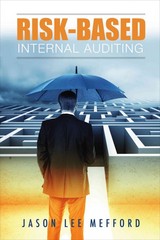I need this to be done by 6 pm so do not waste my time if you are not able to do it, Thanks
Final Exam ACC350 Cost Accounting Strayer University Problem 1. ABC, process costing. Parker Company produces mathematical and financial calculators and operates at capacity. Data related to the two products are presented here. Annual production in units Direct material costs Direct manufacturing labor costs Direct manufacturing labor-hours Machine-hours Number of production runs Inspection hours Mathematical 50,000 $150,000 $ 50,000 2,500 25,000 50 1,000 Financial 100,000 $300,000 $100,000 5,000 50,000 0 500 Total manufacturing overhead costs are: Machining costs Setup costs Inspection costs Total $375,000 120,000 105,000 Required: Compute the manufacturing overhead cost per unit for each product. Problem 2. Sales and production budget. The Mendez Company expects sales in 2010 of 200,000 units of serving trays. Mendez's beginning inventory for 2010 is 15,000 trays; target ending inventory, 25,000 trays. Required: Compute the number of trays budgeted for production in 2010. Problem 3. Flexible budget. Connor Company's budgeted prices for direct materials, direct manufacturing, labor, and direct marketing (distribution) labor per attach case are $40, $8, and $12, respectively. The president is pleased with the following performance report: Direct materials Direct manufacturing labor Direct marketing (distribution) labor Actual Costs Static Budget Variance $364,000 $400,000 $36,000 F 78,000 80,000 2,000 F 110,000 120,000 10,000 F Required: Actual output was 8,800 attach cases. Assume all three direct-cost items above are variable costs. Is the president's pleasure justified? Why? Problem 4. Absorption and variable costing. Osawa, Inc., planned and actually manufactured 200,000 units of its single product in 2009, its first year of operation. Variable manufacturing cost was $20 per unit produced. Variable operating (non-manufacturing) cost was $10 per unit sold. Planned and actual fixed manufacturing costs were $600,000. Planned and actual fixed operating (non-manufacturing) costs totaled $400,000. Osawa sold 120,000 units of product at $40 per unit. Required: 1. Osawa's 2009 operating income using absorption costing is? 2. Osawa's 2009 operating income using variable costing is? Problem 5. Regression, activity-based costing, choosing cost drivers. Newroute Manufacturing has been using activity-based costing to determine the cost of product X-678. One of the activities, \"Inspection,\" occurs just before the product is finished. Newroute inspects every 10th unit, and has been using \"number of units inspected\" as the cost driver for inspection costs. A significant component of inspection costs is the cost of the test-kit used in each inspection. Neela McFeen, the line manager, is wondering if inspection labor-hours might be a better cost driver for inspection costs. Neela gathers information for weekly inspection costs, units inspected, and inspection labor-hours as shown below: Week 1 2 3 4 5 6 7 Units Inspected 1,500 500 1,800 2,500 2,200 800 1,000 Inspection Labor-Hours 200 80 240 250 220 90 120 Inspection Costs $3,900 2,000 4,700 6,000 5,500 2,600 3,100 Neela runs regressions on each of the possible cost drivers and estimates these cost functions: Inspection Costs = $1,004 + ($2.02 * Number of units inspected) Inspection Costs = $626 + ($19.51 * Inspection labor-hours) Neela expects inspectors to work 150 hours next period and to inspect 1,200 units. Using both cost drivers, what amount of inspection costs should Neela budget







